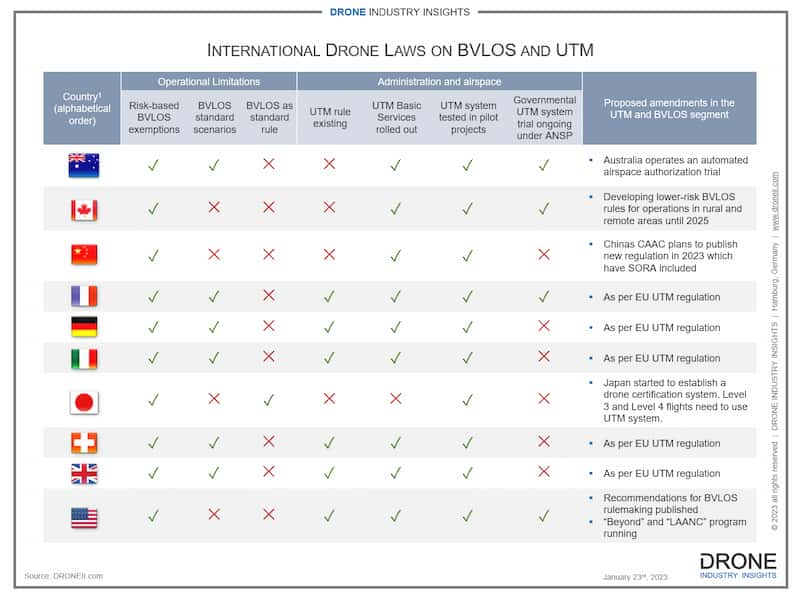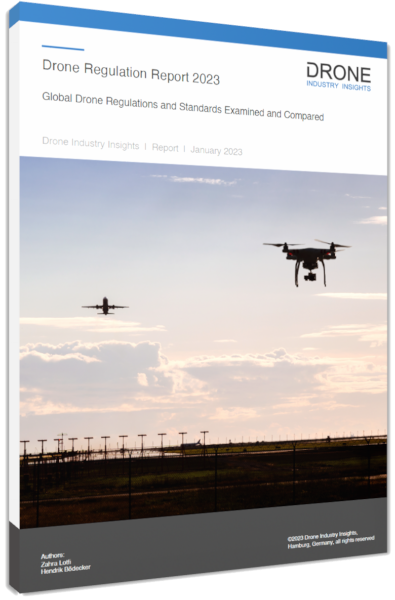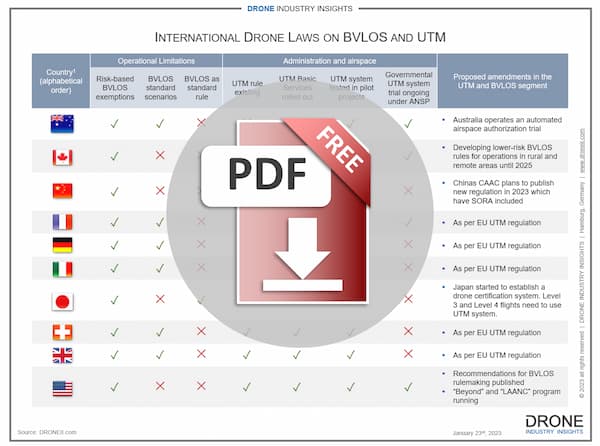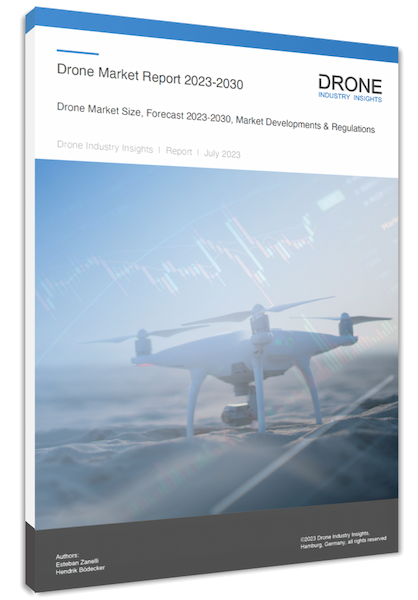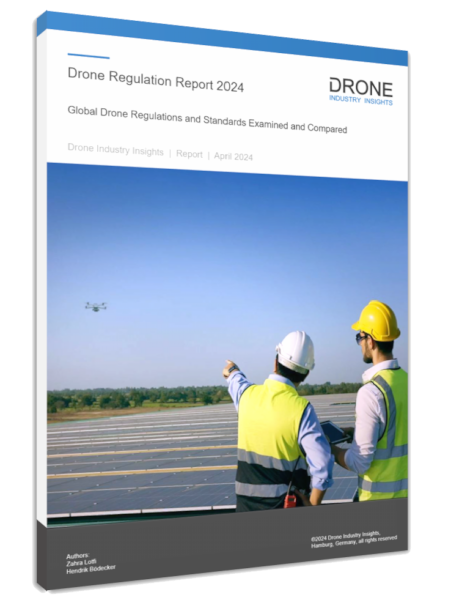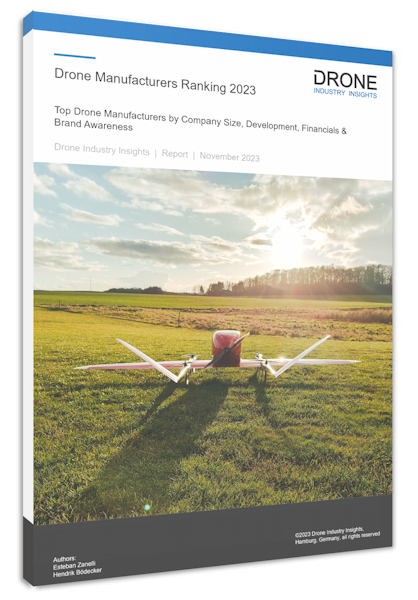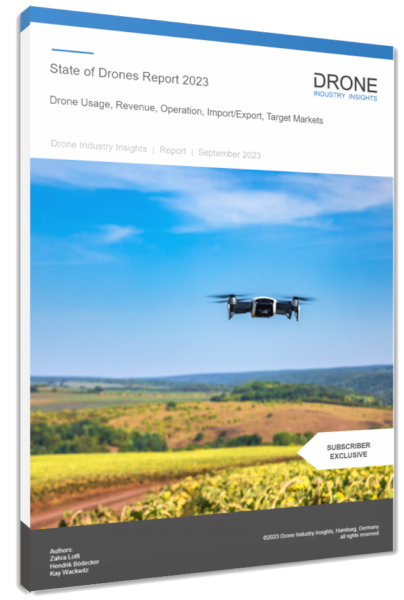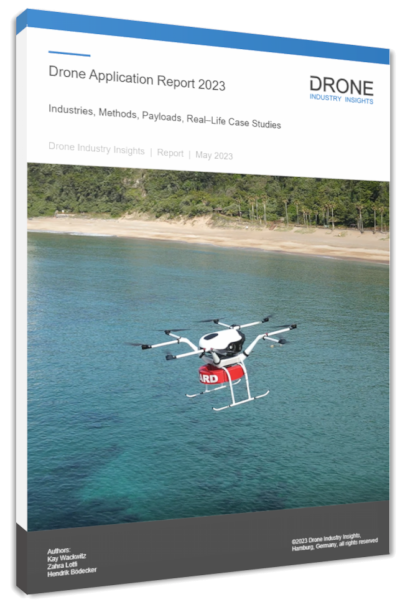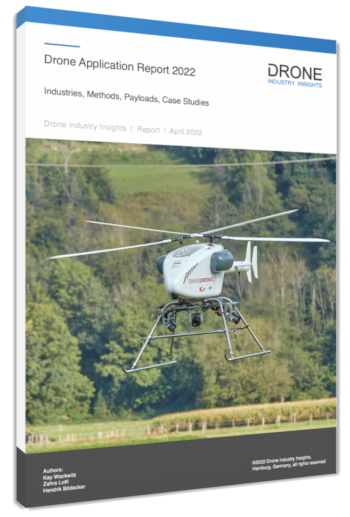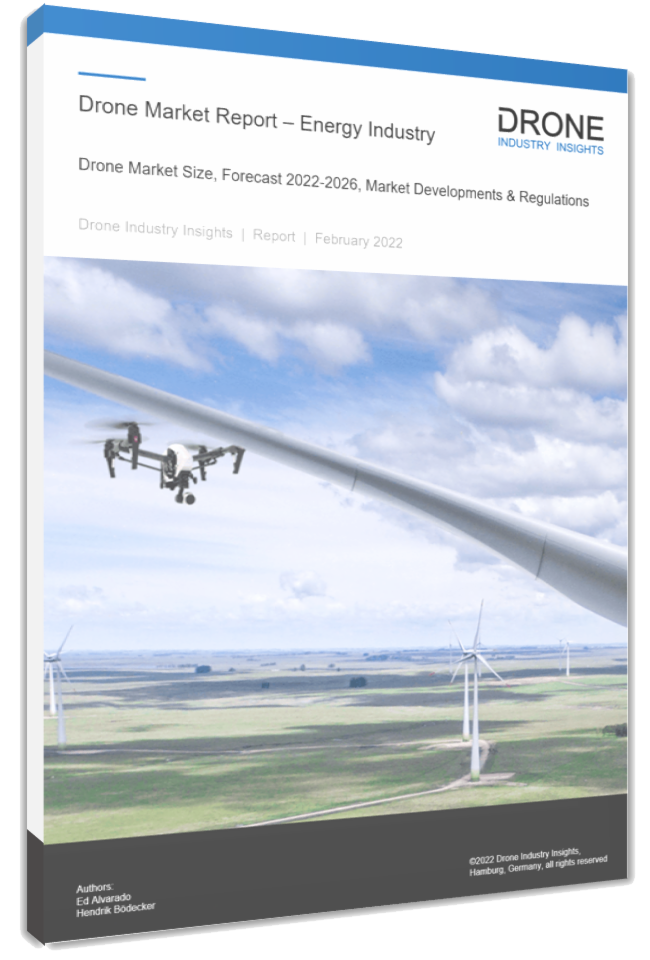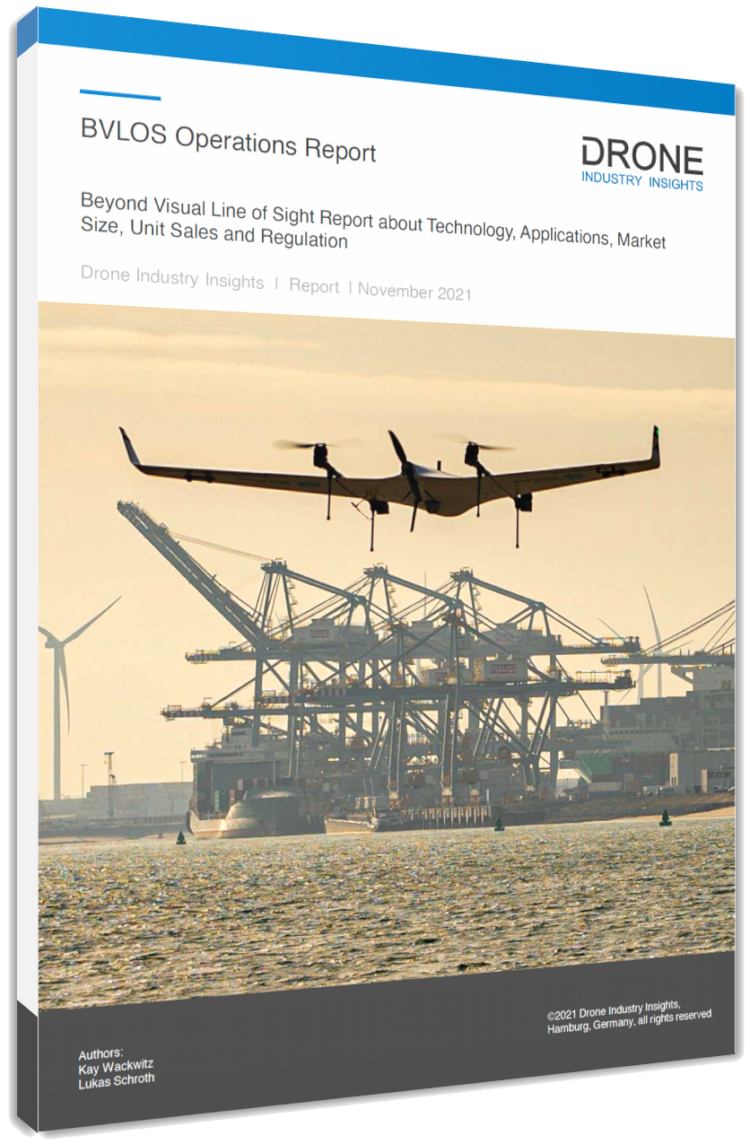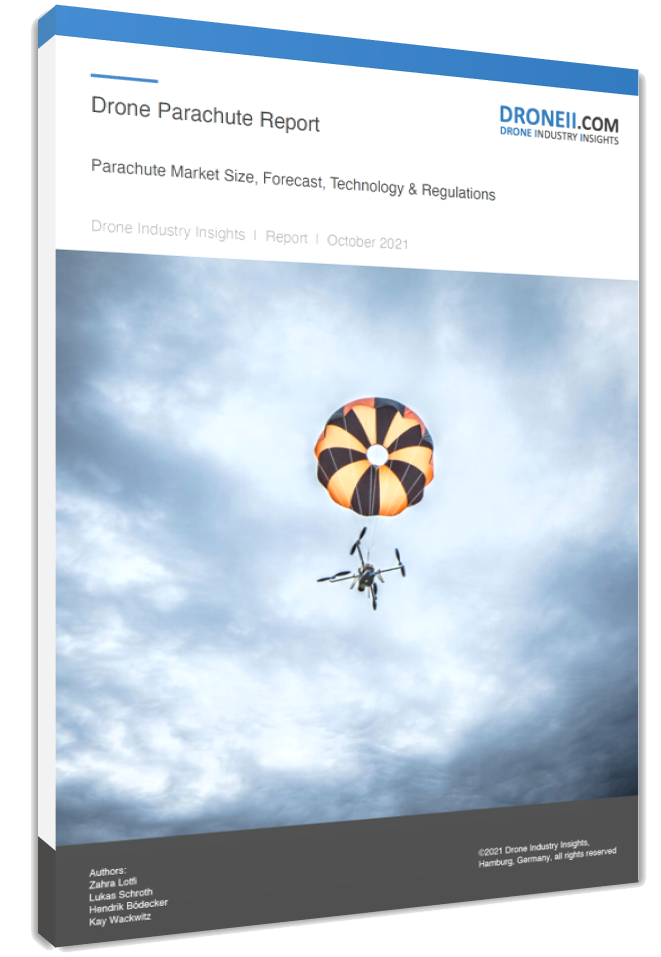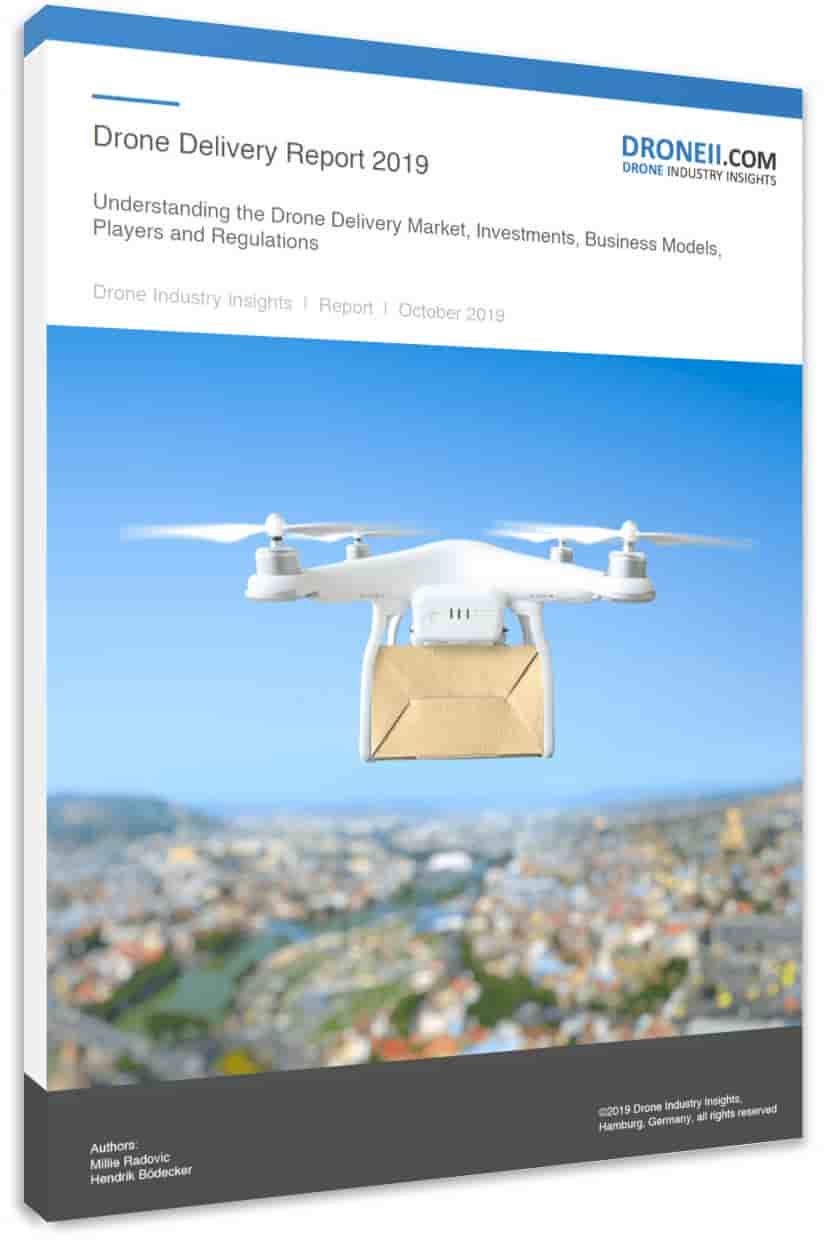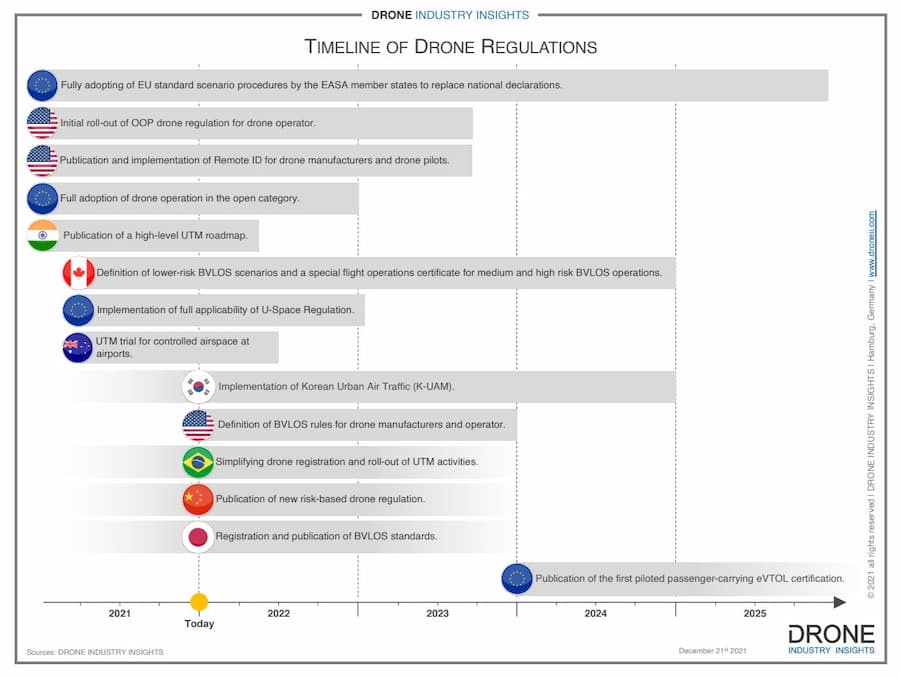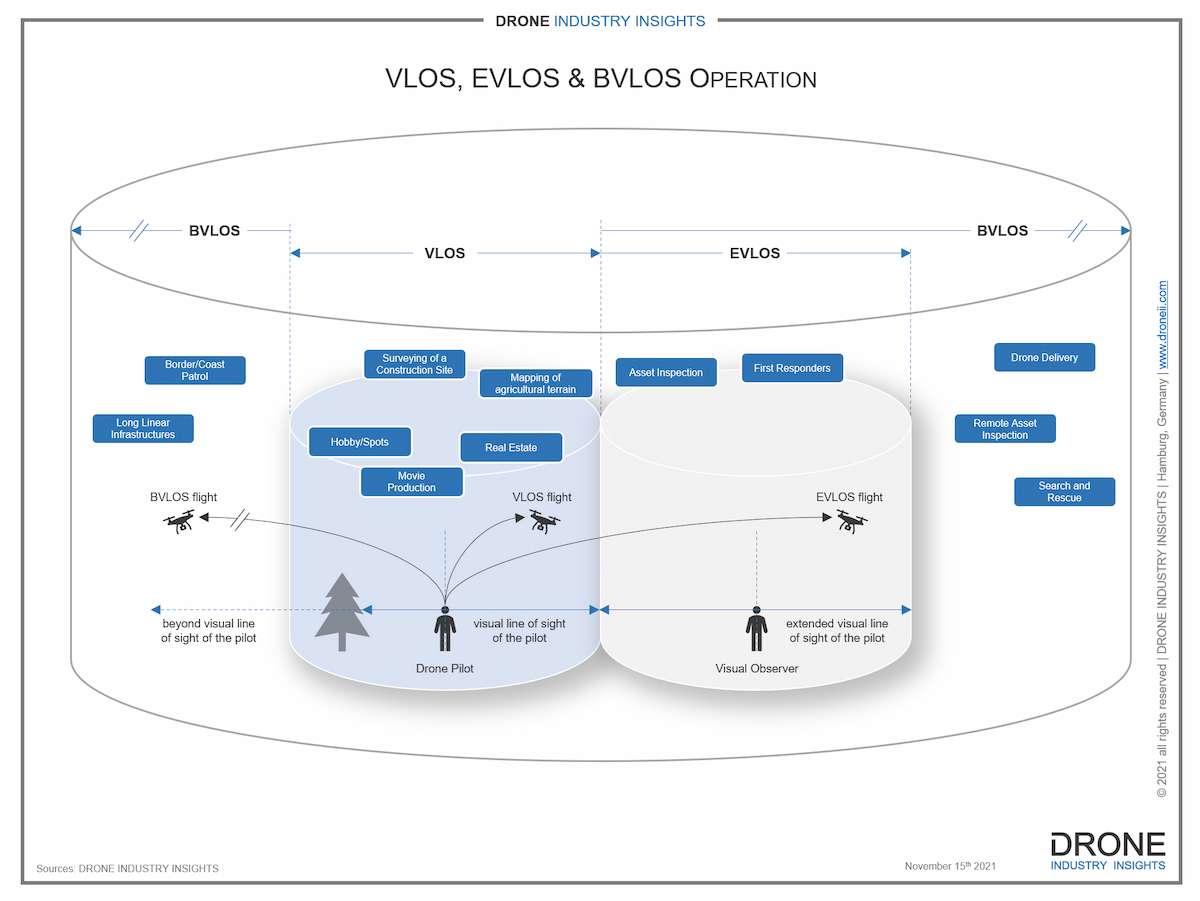The Evolution of Drone Laws
Perhaps no other topic in the drone industry has become as pressing as drone laws. Over the past decade, drone applications have flourished, drone jobs have increased, and drone investments have been booming. Yet many are still waiting for the relevant rules to take effect before they can scale their drone activities, and this is why drone professionals consider rule-making authorities the #1 market driver. The good news is that there has certainly been a lot happening in this field, so this is a brief overview of the three phases that drone regulations go through as well as some of the leading countries and topics for 2023.
Drone Laws 101: the Three Phases
At its core, the development of drone regulation can essentially be summarized in three phases. Though these phases are not necessarily set in stone or required in some way, they still nevertheless describe the way drone laws have developed over the past decade in most countries.
The first phase is establishing simple flight rules with some exemptions. In this regard, the Federal Aviation Administration (FAA) in the US was at the forefront with its Part 107 when it comes to specific frameworks. Most countries in the world followed suit with a framework that had similar limitations for drone flights, namely:
-
- Flights within Visual Line of Sight (VLOS)
- Airspace below 120-150m
- Only in uncontrolled and non-restricted airspace
- Away from people and buildings
Operating drones beyond these limitations required an exemption-based one-off approval. This is why the second phase is simplifying those one-off authorizations. To enable advanced drone operation (e.g., BVLOS) beyond the specified drone laws, industry stakeholders require a simplification of the authorization process similar to the risk-based flight authorization system published by the European Aviation Safety Agency (EASA) (LINK). In addition, pilot programs for testing advanced drone missions in real conditions are necessary to demonstrate how these drone laws translate into real-life and large-scale drone operations.
Finally, the third phase for creating drone laws entails standardizing risk assessment and certification. To make advanced drone operation possible at larger scale, aviation authorities and standard organizations are currently working on technical and procedural requirements for drone operators, pilots, platform and components manufacturers. These requirements (also called specifications) are needed for the certification of drones, operators and pilots. Moreover, standardized certifications help bring drone operations to a similar safety level of manned aviation.
International Drone Rules and Standards
In practice, the first steps towards standard certifications were completed by the end of 2020. EASA published their “special conditions” for the issuance of a type certificate for drones up to 600kg for operating drones under medium risk in the “specific category” of (EU) 2019/947. The FAA showed a different approach by publishing airworthiness criteria of 10 specific drone types with maximum weight of 40kg. These criteria were airworthiness suggestions by the relevant drone manufacturer or operator.
Today, the pioneering regulatory frameworks in the industry are still the drone laws by the EASA in Europe and the FAA in the US. In 2022, the FAA focused on the definition of recommendations for creating BVLOS rules as well as on the definition of airworthiness requirements for drones used in advanced operations (e.g. delivery). A proposed rule for BVLOS operation is expected at the end of 2023. Meanwhile, EASA focused their resources on an update to the SORA process (SORA 2.5), the definition of means of compliance with the Special Conditions for VTOL certification, and the U-Space rules for the EU.
However, only a minority of drone operators around the globe have ever conducted an advanced drone operation. This is partly because the time required to obtain a permit is too long and/or the permit application is sometimes too difficult to proceed. Therefore, the overall development of drone laws is roughly in the second-to-third phase described above: the era of advanced drone operation, like drone delivery, has begun and the specific authorizations will be replaced by certified operation (the next 3-5 years).
Want to Know More About the Latest Drone Laws? Check Out Our New Report!
Report | Drone Regulation Report 2023
• Comprehensive 90-page commercial drone regulation report with country profiles, Drone Readiness Index and upcoming regulation.
• Detailed country profiles for 23 of the largest global drone markets with latest revision date, link to regulation, operational limitations, UTM activities, remarks and outlook.
• Chapter on Drone Readiness Index (DRI) for top 37 drone markets based on six key metrics.
• Dedicated chapters on international drone rules & standards, emerging drone regulation, and regulation outlook, challenges & trends.
The Drone Readiness Index: Leaders in Drone Regulation
DII’s Drone Readiness Index (DRI) provides the most comprehensive comparison of national drone regulation frameworks across the globe. The index relies on six parameters: applicability, operational scope, human resources, administrative infrastructure, certification, and airspace integration.
This year’s final index is topped by the United Kingdom and Australia with an overall of readiness 72% each. Core readiness of these countries are in the operational scope, the administrative infrastructure and airspace integration. It is worth noting that the index rewards proactive rule-making, meaning that if two countries have the same index, the country with the highest positive change from one year to the next are ranked higher. This is why the UK is now ranked higher than Australia despite their equal score of 72.
Following the top 2, there are 9 countries with a score of 68 which include last year’s leaders Belgium and Norway. However, the official third place goes to Taiwan, which gained 35 points more than last year on the index. Taiwan plans to incorporate a remote ID standard equivalent to the FAA’s remote ID rule and will also trial drone deliveries in 2023, following a UTM trial in a remote area that began in July 2022.
Overall, the countries that climbed the most (i.e. took the biggest strides regarding drone laws) were China and Taiwan (+35) followed by Brazil, Switzerland, Malaysia (+31). It is also worth noting that non-EU countries (e.g., Taiwan, Korea, USA) are generally ahead in the certification of drones, given that they directly developed airworthiness requirements for drone certification in high-risk drone operation.
Outlook on Drone Laws: Topics, Challenges and Standards
Unmanned Traffic Management (UTM) – A digital and scalable traffic management system is required that allows for integration of drones with other airspace users in a safe manner. Many basic services of UTM systems are already implemented in most of the (UTM-active) countries. The aforementioned leading countries already have guidelines, standards, government trial programs or even a regulatory draft. But a widescale global implementation of UTM systems remains a crucial aspect for safe and efficient drone operations.
Drone Certification – For scaling advanced drone operations like BVLOS or operations over people, the certification of drones plays an important role in mitigating risks by ensuring an acceptable level of safety. The leading certification regulations for drones come from ICAO, EASA and FAA. Some other countries also fully developed airworthiness requirements and certified drone models. Still, however, smooth and transparent certification processes will remain key for the growth of the global drone industry.
In conclusion, drone rules and standards still pose some challenges on different drone industry segments and these challenges face different timelines before they can be resolved. Some of these challenges will be addressed in the short term (e.g. SORA standards and the introduction of remote ID services). Other challenges like standardizing BVLOS flights or advanced UTM services are more medium-term and might influence all segments only in 3 to 5 years. Finally, there are also challenges with long-term effect, such as the implementation of drone certification and the integration of drones into urban airspaces.
Nevertheless, 2023 promises huge changes in the regulatory space. On top of the agenda are the European U-Space and the American remote ID rule, both which become effective this year. These two regulatory frameworks will be a major boost for the drone industry, airspace safety and for the advancement of drone laws in general.
Download our FREE International Drone Laws Infographic
This infographic, “International Drone Laws”, shows some of the key aspects of drone regulation in some of the leading countries for drone technology around the globe

Before working with drones, Ed acquired vast experience in Communications and Diplomacy. He holds a Master’s in International Relations, Bachelor’s in Economics & Philosophy, and has lived in 7 countries.

Before working with drones, Ed acquired vast experience in Communications and Diplomacy. He holds a Master’s in International Relations, Bachelor’s in Economics & Philosophy, and has lived in 7 countries.
